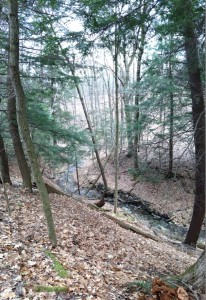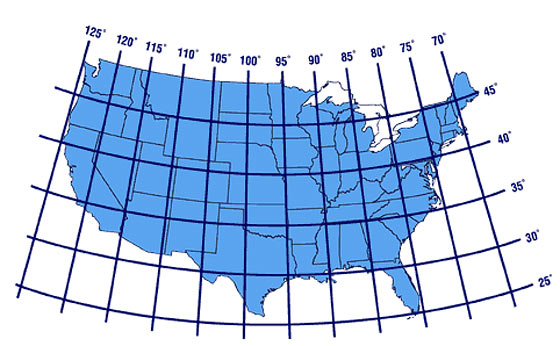7179 Mill Street
Springwater, NY 14560
USA
(hint: if in reading this article as configured on the left side of the homepage, and in doing so you find something cut off at a margin to the side or bottom, merely “select” aka “click on” the article heading and the entirety of the article will fill the full available screen of your computer monitor.)
 HIKE DETAILS:
HIKE DETAILS:
Owing to our colder than average temps in January & February this winter, and deeper than average (record-setting) snowpack accumulation, likely there will still be plenty of snow to enjoy for our Sunday “Ides of March” hike on March 15th, at the Springwater Center retreat facility which is located on the northwest hill above the hamlet of Springwater. (Statistically February 2015 has become our coldest mean temperature February on record.) Hike conditions for this Ides of March hike will be in definite contrast to our previous hike here on April 7, 2013 when winter snows were past.
Likely that this will be a hike to utilize footwear Traction Devices (TDs) or snowshoes. (maybe even skis?) Perhaps your preference. (The progressively higher sun angle and longer days, as well as now substantially increasing temperatures this week may make this a TD hike, rendering out possibility of snowshoes or skis.) We may have a conditions update prior to hike day, so check the head of this Hike Announcement on Saturday evening (or before) for a conditions update.
Two or three (or four) hiking subgroups will be formed, choose the one that best suits you. Differing hike lengths and pace will be offered. Wayne will lead the Climbers for the longest hike. Susan will lead either the Tourists &/or Naturalists hike route, each of which will traverse an abbreviated version of the Climbers route.
Trails consist of some open areas and many treed areas protected from wind on the over 200 acres of the Springwater Center grounds. The Ides of March are typically “not typical” from one year to the next, choose your attire based on weather conditions on hike day.
Also atypical, this hike provides for one of the hiking subgroups, by choosing, to be a silent hiking subgroup. Many activities at the Springwater Center meditation retreat facility involve minimal talking or no talking at times, as aiding to awareness of the here and now, to prevent distraction, allow for effective meditation, centering, and more. The silent hike presents a rare group hiking opportunity. Also being that the Springwater Center is a place of meditation retreat in definition of function, hikers not in the silent group are invited to keep voices to a minimum in deference to not waking up the dead.
Just some benefits of a silent group hike: something different, more personal communing with nature, more observant of one’s place in the world and the here and now. Also more focus on the hike, “in situ”, the trail & surrounds, and on trail conditions/obstructions.
>>An anecdote in support of considering the silent hike option: On one recent hike preview in which one S/T hiker was talking whilst actively hiking and simultaneously observed a trail obstruction, said hiker tripped on that trail obstruction as attention was not focused enough on that obstruction. The talking was a distraction from focusing properly on the trail obstruction, and a gap of the hiker’s snowshoe got caught on the obstruction, resulting in the hiker now being horizontally sprawled in the snow. No harm, no foul, no injury, … the snow was very forgiving. After again getting vertical and continuing to hike, the hiker identified this as cause and verbalized this to a hiking partner. The partner pointed out one benefit of a silent hike is no distraction from talking thus allowing more concentration on the trail and giving potential obstructions their due. The two S/T hikers had just been discussing the silent hike component of the upcoming 3/15/2015 S/T hike, so how apropos.
Hike Planner’s additional note for this hike: For non-silent hiking subgroups, we don’t have to be rigid or strict about the silence, but you may try to keep talking to a necessary minimum — and perhaps discover the joy of being with the natural quiet of the forests and fields, … and the snow, whilst among fellow outdoor appreciators.
>> Well-mannered dogs are welcome to hike with us. Dogs should stay in cars during the social.
DIRECTIONS:
Our meeting place will be at 2:00PM on Sunday March 15, 2015 at the parking lot for the Springwater Center retreat facility immediately adjacent the main building. Address is 7179 Mill St (this section of Mill St is oft referred to as Mill St Extension “on top of the Springwater hill” off NYS Rt 15 near Harpers Ferry Rd, Springwater NY, not Mill St at the bottom of the Springwater hill off NYS Rt 15). The photo provided in navigation Directions (prose form) which depicts NYS Rt 15 intersecting with both Mill Street Extension and Harpers Ferry Rd was captured sans snow, so adjust your mindset accordingly with our current white landscape.
Two direction cautionaries: 1) Mill St (at the bottom of the NYS Rt 15 Springwater hill), and Mill St Extension aka Mill St (at the top of the NYS RT 15 Springwater hill) are both dead ends and do not connect! 2) GPS (lat/long) coordinates of the Springwater Center are: 42.645, -77.613 . Utilize caution that your GPS unit does not try to navigate you to Marrowback Rd which is nearby and to the east, as some GPS units may be prone to this anomaly. If driving on Marrowback Rd (which you do not want to be doing) and looking to get to the Springwater Center, you’ll find the old adage of “you can’t get there from here” applies.
 AFTER-HIKE SOCIAL (potluck), and concurrently held ANNUAL MEETING of SPRINGWATER TRAILS:
AFTER-HIKE SOCIAL (potluck), and concurrently held ANNUAL MEETING of SPRINGWATER TRAILS:
Both the social and the Annual Meeting will be at the main building at the Springwater Center. At this edifice as well as from vantage points on the grounds of the Springwater Center, you will experience some great views while in situ upon the northwest ridge above the hamlet of Springwater. Truly a much appreciated and apropos venue for the Annual Meeting of Springwater Trails. Please remove boots at the door to the Springwater Center. Slippers are appropriate!
Election of Executive Board members of Springwater Trails is but one item on the agenda of the Springwater Trails Annual Meeting. All are welcome at this meeting, whether or not you hold membership. If you are a member please vote by mail, internet, or at the Annual Meeting.
If you are able to join us for the potluck after-hike social, please bring a dish-to-pass or consider making a cash donation (suggested $5) to the social fund to help defray cost of paper products and related supplies. At the Springwater Center, there is a complete kitchen to store and reheat dishes best served hot. Dishes best served cold, well… , no problem with our colder temps this time of year. Please bring an appropriate beverage of your choice ; also slippers &/or a dry pair of socks are suggested as shoes will need to be removed at the door.
Thanks go to all the staff at the Springwater Center who have opened the Springwater Center retreat facility to this hike, social, and Annual Meeting!
————————————————————
Additional educational note – about GPS (latitude/longitude) coordinates:
In coordinates, latitude is listed first (and then longitude), so consider the coordinate listing system as alphabetical. And if you use the mnemonic “changes in latitudes, changes in attitudes”, as Jimmy Buffet proffers in his song, you can remember that changing of seasons and temperatures is associated with latitudes (thus further north or further south). Continuing further explanation, alphabetically North comes before South, and likewise North is over South, thus the southern hemisphere (southern latitudes) being below the equator has an assigned minus (-), while the northern hemisphere (northern latitudes) where we in New York & all of the US are has no preceding minus (-) in latitude.
In coordinates, longitude is the listed second (read last). In longitude, the US is in the minus (-) half of longitudes, it lies west of the Prime Meridian. (The Prime Meridian is an imaginary north/south axis line labeled as longitude zero; it passes thru Greenwich, England the site of the Royal Greenwich Observatory.) Being that the continental US (and Hawaii, most of Alaska, and North & South America) lies to the West of the Prime Meridian, the US is in the western hemisphere and considered West Longitude. Again alphabetically, East is before West so logically the latter (West Longitude) gets a minus (-) assigned to it in longitude, while East Longitude (think Europe, Asia, Africa) has no preceding minus (-) in longitude.
What lies 180 degrees, half way around the globe from the Prime Meridian, you ask? Well, it is the antimeridian aka the 180th meridian aka 180th parallel. What about the “International Date Line” (IDL)? Well, the IDL roughly approximates the antimeridian, but deviates to pass around some island groups and territories. No time herein to start talking about “time zones”, but there are commonalities to meridians. What about Greenwich Mean Time (GMT)? Yep, related to that Prime Meridian, but again not talking about it herein.
Close to home, utilizing this latitude/longitude coding system in degrees and decimal, the “four corners in Springwater, NY” can be represented as approximately 42.637310, -77.596007 This decimal notation is but one of a number of ways to code latitude and longitude. Utilizing degrees, minutes, and seconds of measure is but another.
You can see the latitude/longitude system as a type of grid. Visualizing can make for easy, “ah-ha” understanding. Cropped from an article, the latitude/longitude grid of the continental US (below) may help you to easily identify with the concept. The cropped segment is provided chiefly for viewing the grid, but if you wish you can take up on the accompanying prose, and even take a look at the article in entirety. The prose accompanying this grid does not utilize decimal listing of lat/long, it uses degrees, minutes (‘), and seconds (“). The decimal listing of lat/long is most easily utilized in a GPS unit geared toward driving destinations.
If you know more than you did before reading this segment, Great!, … and now you can consider it as a primer for when S/T hikes may utilize navigational coordinates (aka Lat/Long coordinates, aka GPS coordinates), … perhaps a future hike with a Geocaching or Orienteering component.
—- cropped segment of an article (below), including the lat/long grid of the US —-
It is worth taking a few seconds to memorize the following numbers. It will help you to use latitude and longitude more effectively:
1′ = 1.2 miles
1″ = .02 miles
Los Angeles
34° 3′ 8″ N / 118° 14′ 34″ W
34 degrees 3 minutes 8 seconds North / 118 degrees 14 minutes 34 seconds West
<<<<<<<<<<<<<<<<<<<<<<<<<<<<<<<<<<<<<<<<<<<<<<<<<

